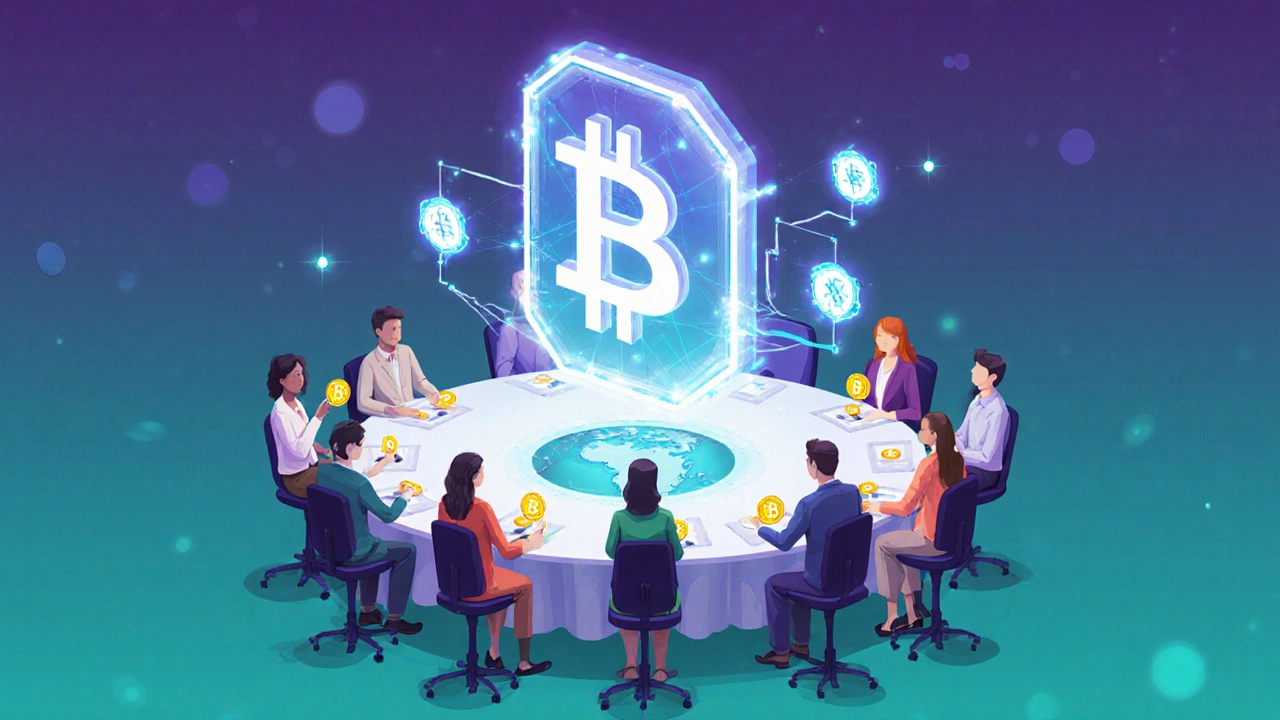Crypto DAO: What It Is and Why It Matters
When working with crypto DAO, a decentralized autonomous organization that runs on blockchain code and makes decisions via token‑based voting. Also known as decentralized autonomous organization, it lets participants coordinate without a central boss, using smart contracts to enforce rules.
A governance token, a digital asset that grants voting power over protocol upgrades, fund allocations, and rule changes is the core tool that fuels a crypto DAO. These tokens usually follow a fixed supply, are tradable on exchanges, and can be earned by contributing value—whether that means providing liquidity, writing code, or curating content. Because each token represents a slice of decision‑making, token holders collectively steer the organization’s future, making the system both transparent and resilient.
Underlying all of this is the blockchain, a distributed ledger that records every transaction and vote in an immutable way. The blockchain guarantees that no single actor can rewrite history, which is why crypto DAOs can operate trustlessly across borders. On top of the chain sit smart contracts, self‑executing code that automatically enforces the DAO’s rules once conditions are met. Together they create a three‑layer stack: blockchain for security, smart contracts for automation, and governance tokens for community control.
These layers enable real‑world use cases that were hard to imagine before. For example, a crypto DAO can fund open‑source projects by allocating treasury funds through token‑holder votes, or it can manage a decentralized finance (DeFi) protocol where users decide on fee structures. In each case, the DAO’s health depends on active participation, clear token economics, and robust code audits. The more diverse the voter base, the less likely a single group can hijack the system, reinforcing the idea that crypto DAO structures thrive on decentralization.
Of course, challenges remain. Token concentration can lead to plutocracy, where a few large holders dominate decisions. Smart contract bugs may lock funds forever, and regulatory bodies are still figuring out how to classify DAOs under existing laws. By understanding these risks early, participants can design safeguards—like quorum thresholds, multi‑sig wallets, or staged voting periods—to mitigate abuse and ensure long‑term sustainability.
Below you’ll find a curated set of articles that break down each piece of this puzzle: from the mechanics of Bitcoin block rewards that affect overall token supply, to deep dives on governance token design, and practical guides on building your own DAO. Whether you’re a newcomer curious about the basics or a developer looking for technical details, the collection offers actionable insights to help you navigate the fast‑moving world of crypto DAOs.

What Is a DAO in Crypto? A Simple Guide
- by Zephyr Blackwood
- on 25 Sep 2025
A clear, beginner-friendly guide that explains what a DAO is in crypto, how it works, its benefits, risks, real examples, and steps to join or create one.
